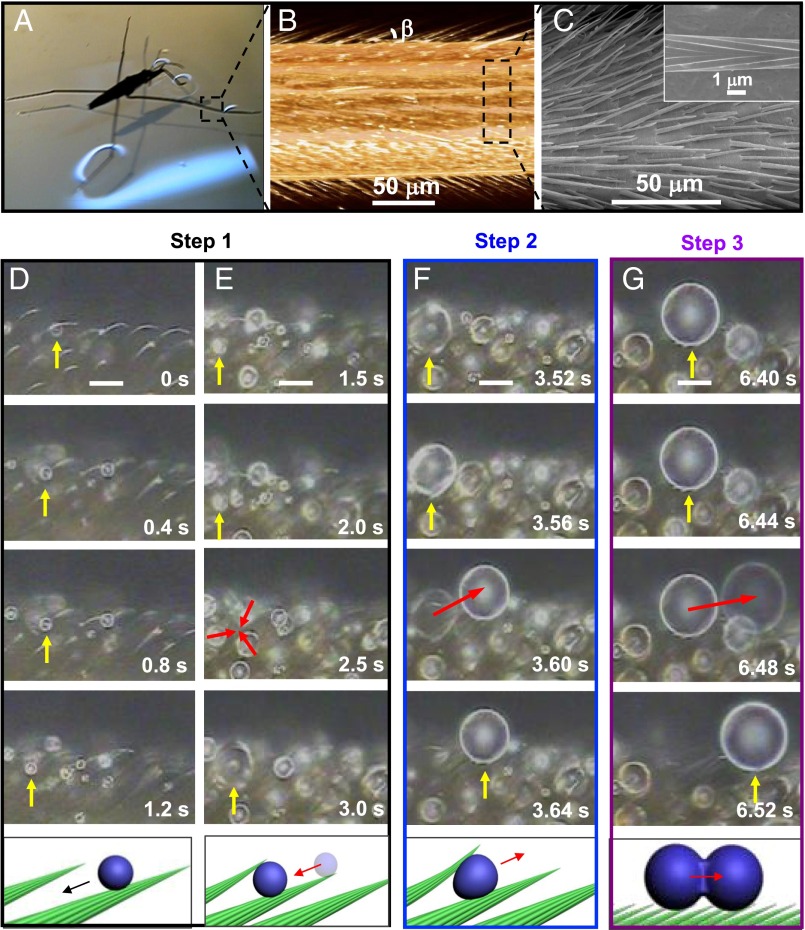Fig. 1.
Cascade of self-motions for water droplets condensing on a leg of water strider. (A) G. remigis, an insect commonly called water strider, lives at the surface of water in a highly humid environment. (B) Micro-XCT and (C) SEM images of a strider’s leg. It is composed of tilted conical setae, and nanogrooves decorate each seta (Inset). (D–G) Water condensation in a leg placed in a fog: as we follow the drop pointed out by a yellow arrow, three successive dynamical steps are observed, eventually leading to the expulsion of water. Magnification is kept constant (scale bar, 15 μm), and time is indicated in each picture. Corresponding movie is Movie S1. (D and E, step 1) Tiny droplets self-propel on single setae, before stopping when contacting another seta. Then, droplets grow by merging with neighbors (red arrows) (F, step 2) As condensation proceeds, a growing drop deforms the surrounding setae enough to generate an elastic force able to expel it at t = 3.6 s out of the structures (red arrow). Image persistence is used to give the feeling of this quick motion. (G, step 3) At the leg surface, coalescence between neighboring drops produces directional motion at t = 6.48 s (red arrow). Again, image persistence is used to suggest fast motion. Hence droplets at a micrometric scale can be self-removed, a key fact for keeping legs dry in a humid atmosphere.

